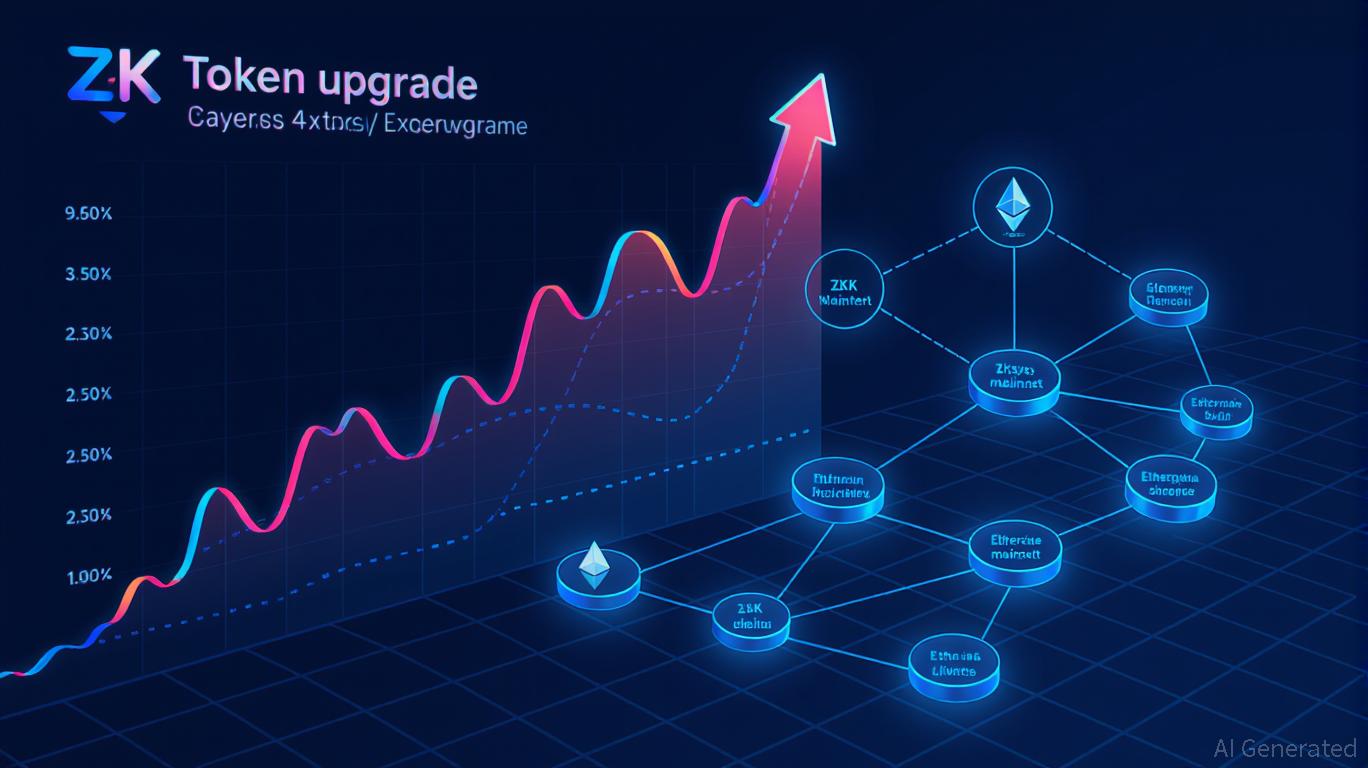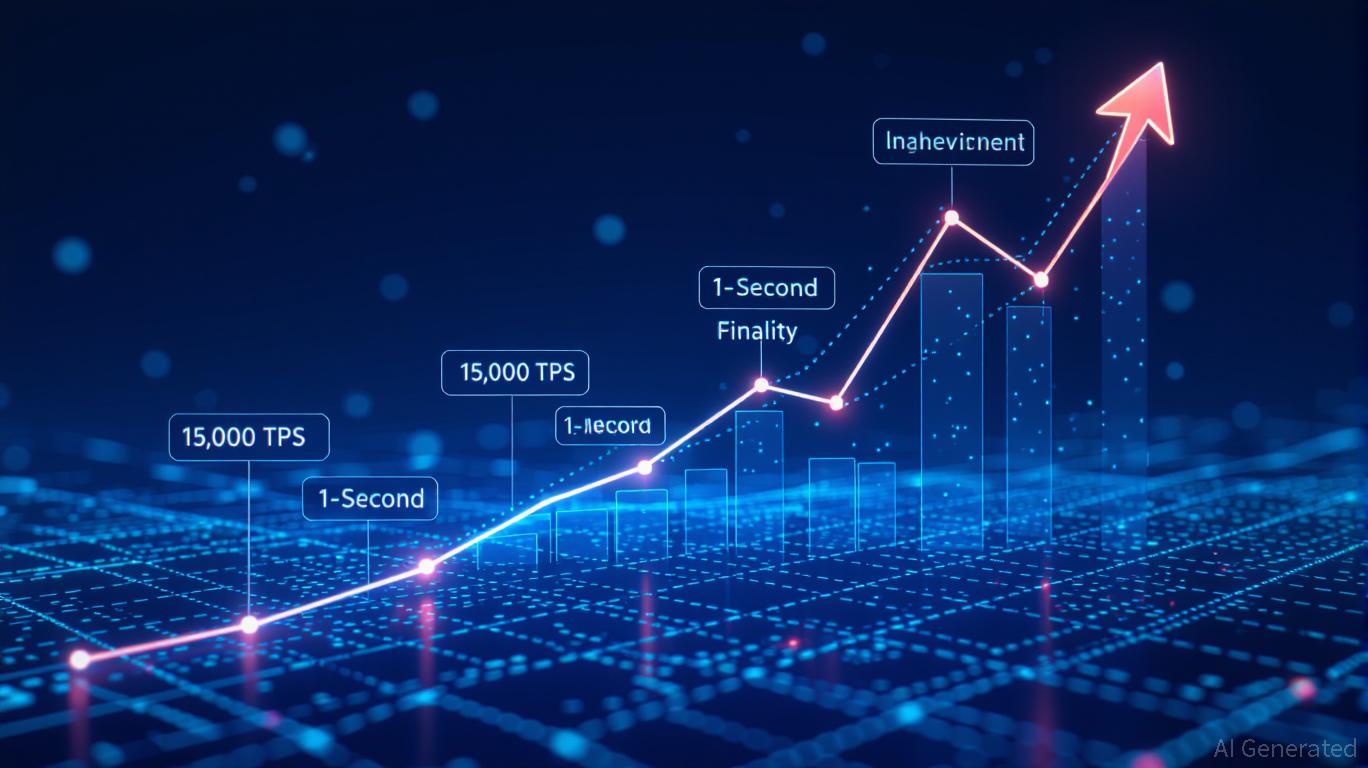Astar 2.0’s New Direction: Leading the Way in Blockchain Expansion and Business Integration
- Astar Network's Astar 2.0 roadmap (2023-2025) targets blockchain scalability and enterprise adoption through zkEVM and cross-chain interoperability. - The platform achieved 150,000 TPS via hybrid architecture, aiming for 300,000 TPS to enable enterprise-grade applications across Ethereum , Polkadot , and BSC. - Strategic partnerships with Toyota , Japan Airlines, and Sony demonstrate blockchain's real-world utility in supply chains, loyalty programs, and asset tokenization. - Staking 2.0 governance and c
A New Era of Scalability: From Concept to Implementation
Central to Astar 2.0 is its zkEVM mainnet, which debuted in 2024, allowing Ethereum-compatible applications to function with much lower gas costs and increased transaction throughput. This breakthrough directly addresses Ethereum’s persistent scalability limitations, providing developers with an affordable solution that maintains compatibility with current tools. As highlighted in a Bitget report, the network has already reached 150,000 transactions per second (TPS), with plans to boost this to 300,000 TPS—a milestone essential for large-scale enterprise deployment, according to a
The platform’s hybrid framework, known as Astar Link, further advances scalability by connecting the

Enterprise Integration: From Alliances to Tangible Applications
The significance of Astar 2.0 extends well beyond technical progress. The network has established alliances with major global brands—including Casio, Mazda, Japan Airlines, Sony, and Toyota—to incorporate blockchain into conventional business sectors. These partnerships cover areas such as logistics, loyalty programs, and tokenization of real-world assets (RWA), illustrating blockchain’s real-world value outside of speculative markets.
For example, Astar’s collaboration with Toyota’s supply chain aims to boost transparency and traceability in car manufacturing, while its work with Japan Airlines is focused on blockchain-powered loyalty solutions. These efforts reflect a broader movement among corporations to leverage decentralized technology for cost reduction and operational improvements. As mentioned in the Bitget coverage, Astar’s emphasis on real-world asset tokenization is especially attractive to institutional investors, as it paves the way for new asset-backed DeFi offerings.
Institutional Focus: Governance, Regulation, and Security
For institutions, adoption requires more than just scalability—it also demands strong governance and adherence to regulations. Astar 2.0 meets these needs with its Staking 2.0 framework, which brings a decentralized governance structure that aligns the interests of developers, validators, and users. This approach empowers stakeholders to participate in protocol decisions, ensuring the network evolves transparently and with community input, as described in the Bitget analysis.
Moreover, Astar has implemented top-tier security protocols, including comprehensive smart contract audits and compliance solutions tailored for institutional users. These safeguards are vital for attracting traditional investors who may be cautious due to the volatility and regulatory uncertainty that have historically affected the crypto industry.
Summary: Astar 2.0 Driving the Next Generation of Web3
Astar Network’s strategic transformation through Astar 2.0 offers a comprehensive solution to the challenges of blockchain scalability and enterprise integration. By blending technological advancements with real-world collaborations, the platform is not only overcoming the shortcomings of current blockchains but also building a bridge between decentralized networks and established industries. For investors, this positions Astar as a significant contender in the emerging Web3 infrastructure landscape, where scalability and institutional confidence intersect.
As the roadmap for 2023–2025 unfolds, Astar’s achievements in TPS, cross-chain compatibility, and corporate partnerships will serve as key measures of its sustainability. Those who appreciate the importance of these developments may see Astar 2.0 as a promising investment in the future of blockchain technology.
Disclaimer: The content of this article solely reflects the author's opinion and does not represent the platform in any capacity. This article is not intended to serve as a reference for making investment decisions.
You may also like
Vitalik Buterin Backs ZKsync: Accelerating Institutional Embrace Within Ethereum's Layer-2 Network
- Vitalik Buterin endorsed ZKsync's Atlas upgrade, highlighting its 15,000 TPS capacity and ZK-secured scalability for Ethereum's institutional adoption. - The upgrade's ZK Stack enables seamless Layer 1-2 liquidity sharing, attracting enterprises with privacy-focused, Ethereum-compatible solutions. - ZK token's deflationary model and 50% price surge post-endorsement demonstrate growing institutional confidence in ZKsync's enterprise-grade infrastructure. - Upcoming Fusaka upgrade (30,000 TPS target) and e

ZK Atlas Enhancement: Accelerating Institutional Embrace in the Age of Blockchain
- ZK Atlas Upgrade addresses institutional blockchain scalability needs with 15,000 TPS and 1-second finality, aligning with trading/settlement demands. - ZKsync's deflationary tokenomics model ties token value to network usage, boosting institutional confidence through yield generation and scarcity. - Vitalik Buterin's endorsement and Ethereum compatibility lower adoption barriers, enabling seamless integration with existing institutional workflows. - Post-upgrade $300M+ daily trading volume and 20% token

Pi Coin’s Pursuit of AI Faces Challenges from Market Instability and Scalability Issues
- Pi Coin (PI) fell below $0.30 amid market volatility, despite a 21% surge driven by whale activity and 535% higher trading volume. - Node 0.5.4 upgrades improved reward accuracy and network reliability, addressing bugs in block creation and automatic updates. - Collaboration with OpenMind demonstrated Pi Nodes' AI processing potential, positioning the network as a decentralized computing alternative. - Sustaining gains above $0.27 is critical to test $0.36 resistance, while competition from Bitcoin and S
Ethereum News Update: Ethereum’s $201B Utility Boom Contrasts with ETH’s Stagnant Price—Is Broader Market Direction Needed?
- Ethereum's tokenized assets hit $201B, capturing 64% of global market share, driven by institutional adoption and stablecoin dominance. - Stablecoins like USDT/USDC and PayPal's PYUSD ($18.6B in 2025) fuel DeFi, cross-border payments, and exchange liquidity. - Tokenized RWAs ($12B) and BlackRock/Fidelity's on-chain funds surge 2,000% since 2024, outpacing traditional finance infrastructure. - ETH price remains below $3,500 despite strong fundamentals, with technical indicators showing weak buying pressur
